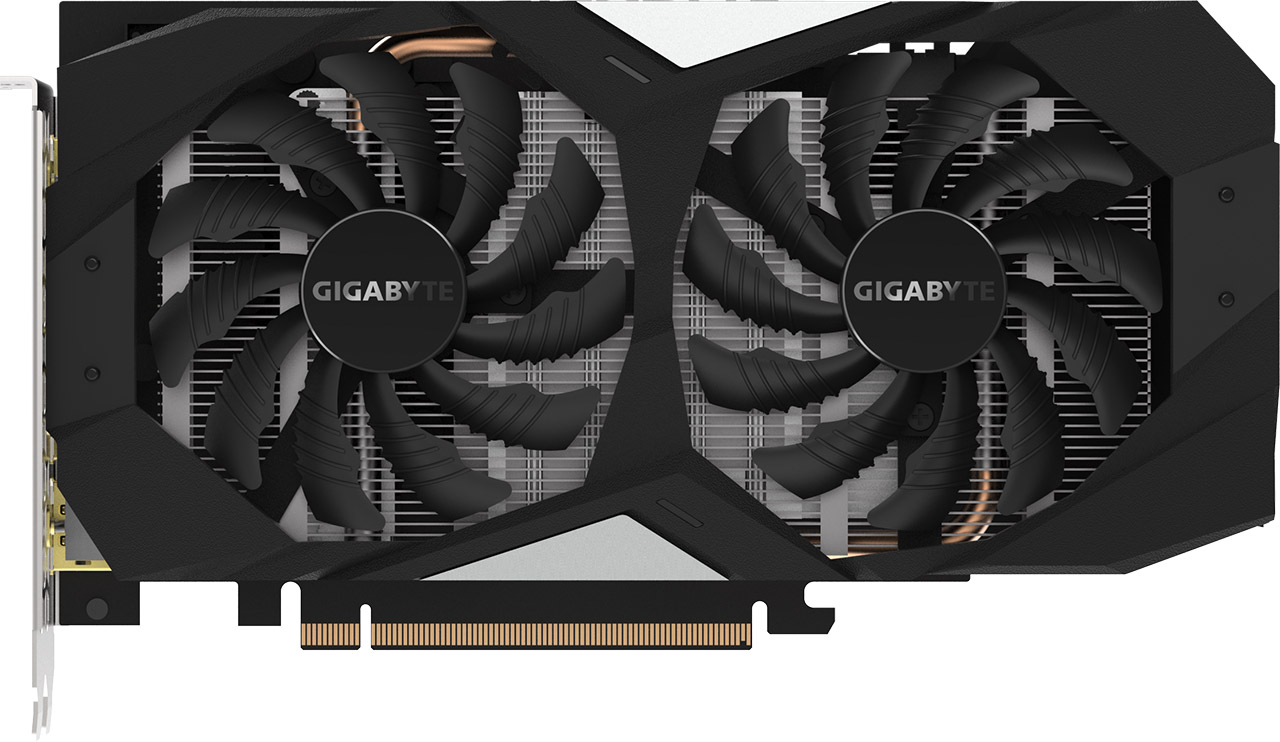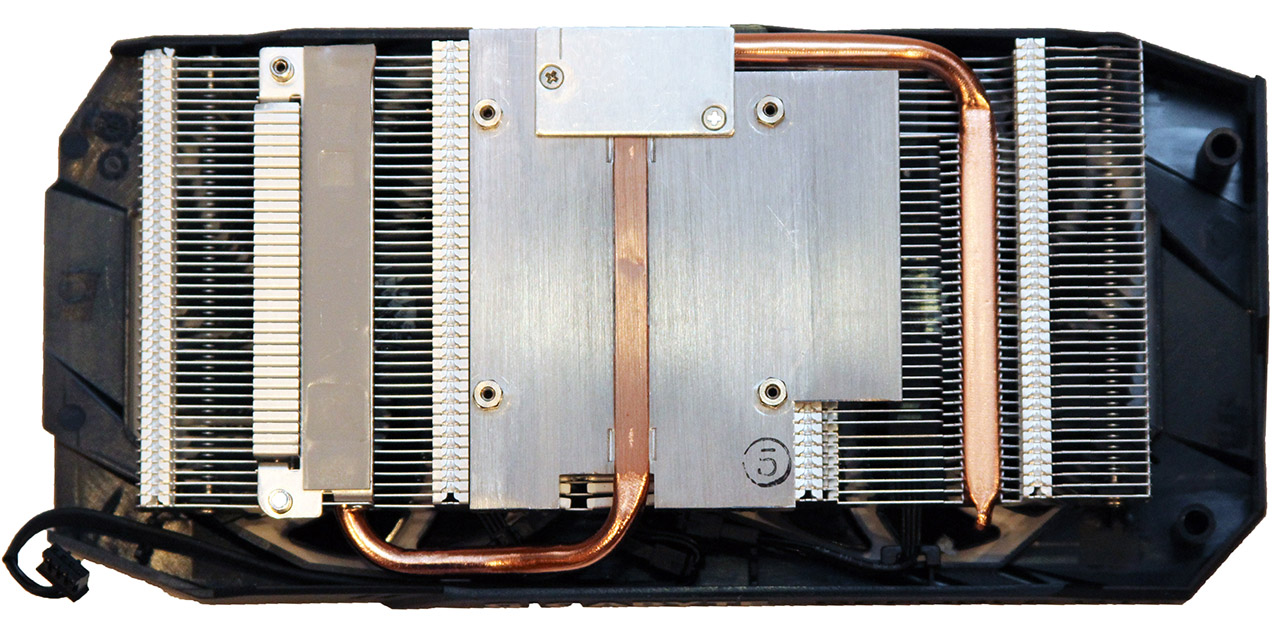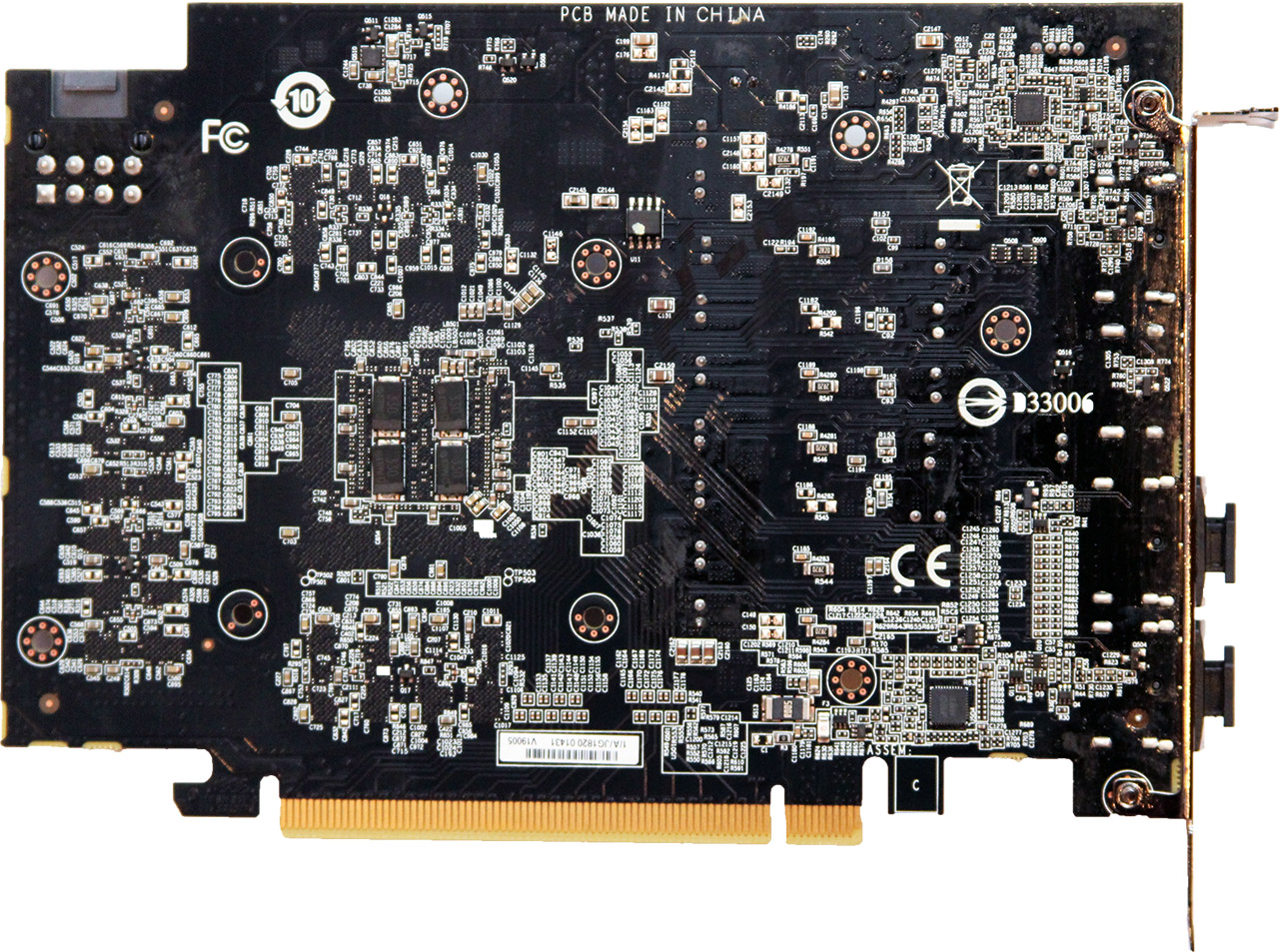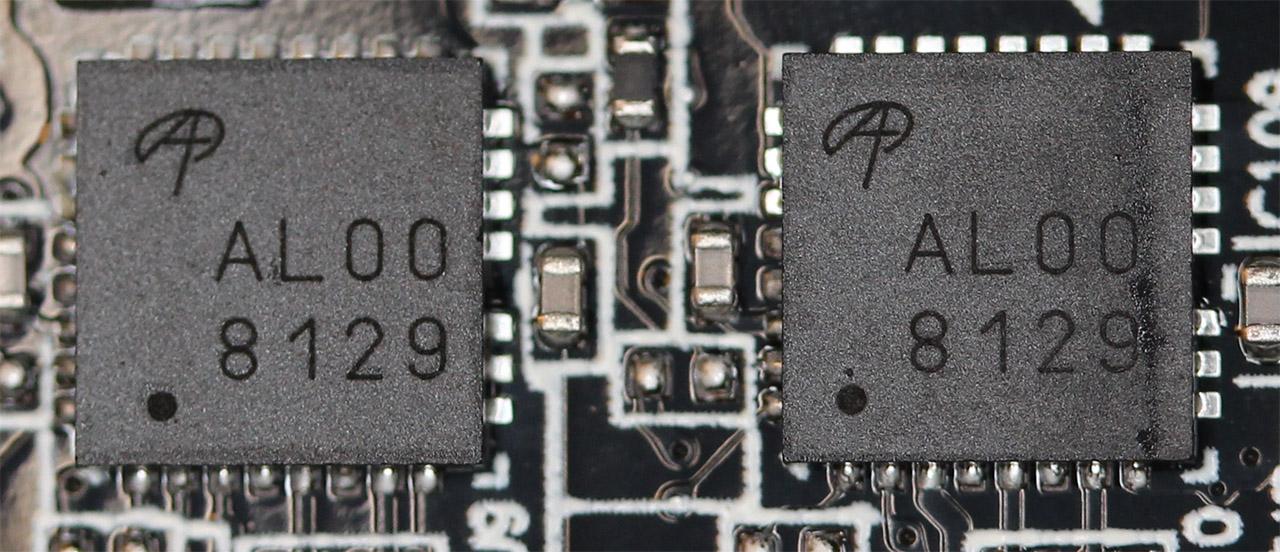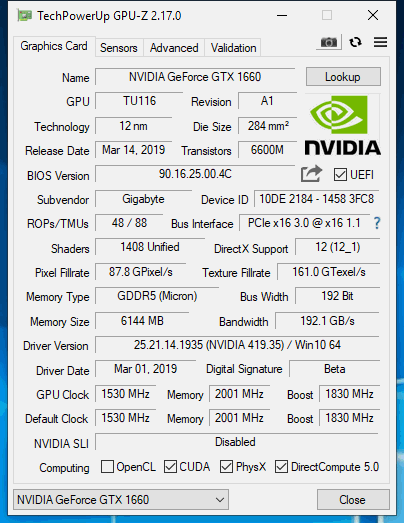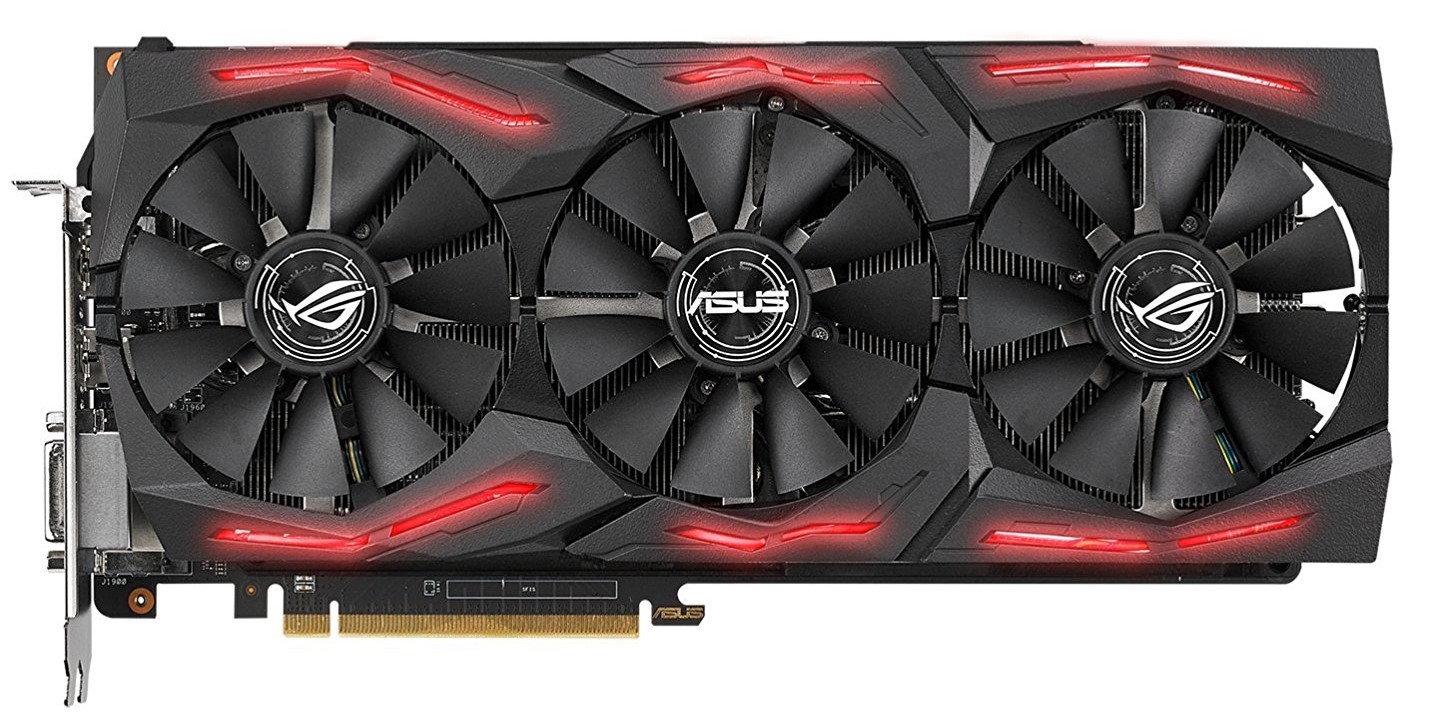Nvidia GeForce GTX 1660 Review: The Turing Onslaught Continues
Why you can trust Tom's Hardware
Meet Gigabyte’s GeForce GTX 1660 OC 6G
The GeForce GTX 1660 launch is driven by Nvidia’s board partners. There won’t be a Founder’s Edition card. Rather, companies like Gigabyte will introduce a range of models representing multiple price and performance points. Today’s review covers the GeForce GTX 1660 OC 6G, Gigabyte’s entry-level $220 board.
As we continue making our way down Nvidia’s Turing-based product stack, it should come as no surprise that lower prices are accompanied by more cost-conscious designs. The GeForce GTX 1660 OC 6G is no slouch, though. From the front, it’s apparent that Gigabyte employs an aluminum heat sink topped by the company’s Windforce 2X cooler. A plastic fan shroud houses two 90mm fans spinning in opposite directions.
Gigabyte’s PCB is about 6 ¾” (17cm) long. However, the fan shroud and backplate extend beyond its edge, resulting in a ~9” (22.5cm) length measurement. The GeForce GTX 1660 OC 6G is also relatively tall, measuring 4 ¾” (~12cm) from the bottom of the PCI Express slot to its top edge. A double-slot form factor is ideal for compact enclosures. There’s little reason, in our opinion, for a 120W card to take up any more room than that.
Flipping the card over, a plastic backplate bears Gigabyte’s logo and adds a decorative touch over the PCB. However, there is no contact between the plate and any of the components underneath, nor is there any ventilation. This piece of plastic is merely decorative, meeting the fan shroud’s bezel in the back. A quick glance makes it seem like the cooler is completely enclosed.
Up top, the tall PCB dips down to keep your eight-pin power connector from protruding too far. The connector is also rotated 180 degrees to avoid interfering with overhanging plastic pieces. Another silver Gigabyte logo is painted onto the shroud, flanked by Nvidia’s GeForce GTX branding.
By choosing not to expose dual-link DVI, Gigabyte is able to fit three DisplayPort outputs and an HDMI connector on its slot bracket, plus leave tons of room for ventilation. That turns out to be smart in this card’s case, since horizontally-oriented fins allow some heated air to exhaust out the front.
With the backplate and sink removed, we see that Gigabyte’s cooler is more than just aluminum. A single, flattened, copper pipe runs through the center, right above TU116. It bends to the right and left, dissipating heat evenly through the array of fins. Strategically-placed plates cover the voltage regulation circuitry and memory modules, sandwiching thermal pads between them.
Get Tom's Hardware's best news and in-depth reviews, straight to your inbox.
Peeling away those pads allows us to identify on-board components. TU116 is rotated 90 degrees and surrounded by six Micron MT51J256M32HF-80:B memory modules rated for 8 Gb/s data rates.
The GPU’s power supply is composed of four phases controlled by a uP9512R on the PCB’s back side. It’s attached to four Alpha & Omega Semiconductor AOZ5332QI DrMos power modules, which include high- and low-side MOSFETs, a driver, and the bootstrap diode. Each is capable of a continuous 50A.
Ubiq Semiconductor’s familiar dual-phase uP1666Q controls the memory’s voltage regulation circuitry by way of two AON6994 dual N-channel MOSFETs.
As we saw from EVGA’s GeForce GTX 1660 Ti XC Black Gaming, Gigabyte leaves vacant pads for two additional GPU phases. There’s also a pair of emplacements for extra GDDR5 memory modules. Nvidia did something similar with GeForce GTX 1060, leaving a couple of blank spots on its Founders Edition card that were never populated. This is a time- and cost-saving measure, which allows the company to use one PCB for multiple products.
How We Tested Gigabyte’s GeForce GTX 1660 OC 6G
Obviously, GeForce GTX 1660 is more mainstream than the other Turing-based boards we’ve reviewed. As such, our graphics workstation, based on an MSI Z170 Gaming M7 motherboard and Intel Core i7-7700K CPU at 4.2 GHz, is apropos. The processor is complemented by G.Skill’s F4-3000C15Q-16GRR memory kit. Crucial’s MX200 SSD is here, joined by a 1.6TB Intel DC P3700 loaded down with games.
As far as competition goes, the 1660 mostly goes up against GeForce GTX 1060 6GB from Nvidia’s line-up, though we want the GeForce GTX 1660 Ti in there as well. GeForce GTX 1070 and 1070 Ti are also relevant from the previous generation. All of those mainstream cards are included, plus GeForce RTX 2060. On the AMD side, we’re mostly interested in Radeon RX 590, along with Radeon RX Vega 64 and Radeon RX Vega 56.
Our benchmark selection includes Ashes of the Singularity: Escalation, Battlefield V, Destiny 2, Far Cry 5, Forza Horizon 4, Grand Theft Auto V, Metro: Last Light Redux, Shadow of the Tomb Raider, Tom Clancy’s The Division, Tom Clancy’s Ghost Recon Wildlands, The Witcher 3 and Wolfenstein II: The New Colossus.
The testing methodology we're using comes from PresentMon: Performance In DirectX, OpenGL, And Vulkan. In short, these games are evaluated using a combination of OCAT and our own in-house GUI for PresentMon, with logging via GPU-Z.
We're using driver version 419.35 to test GeForce GTX 1660, 418.91 for GeForce GTX 1660 Ti, and build 417.54 for everything else. AMD’s cards utilize Crimson Adrenalin 2019 Edition 18.12.3.
MORE: Best Graphics Cards
MORE: Desktop GPU Performance Hierarchy Table
MORE: All Graphics Content
Current page: Meet Gigabyte’s GeForce GTX 1660 OC 6G
Prev Page Nvidia GeForce GTX 1660 Review Next Page Gaming at 1920 x 1080